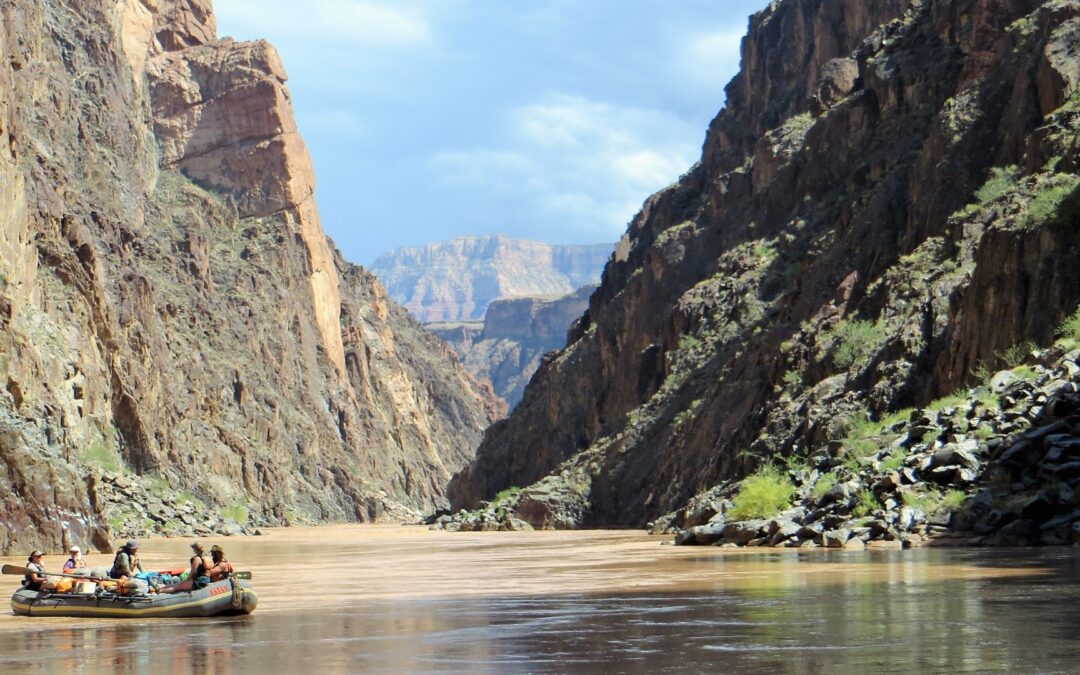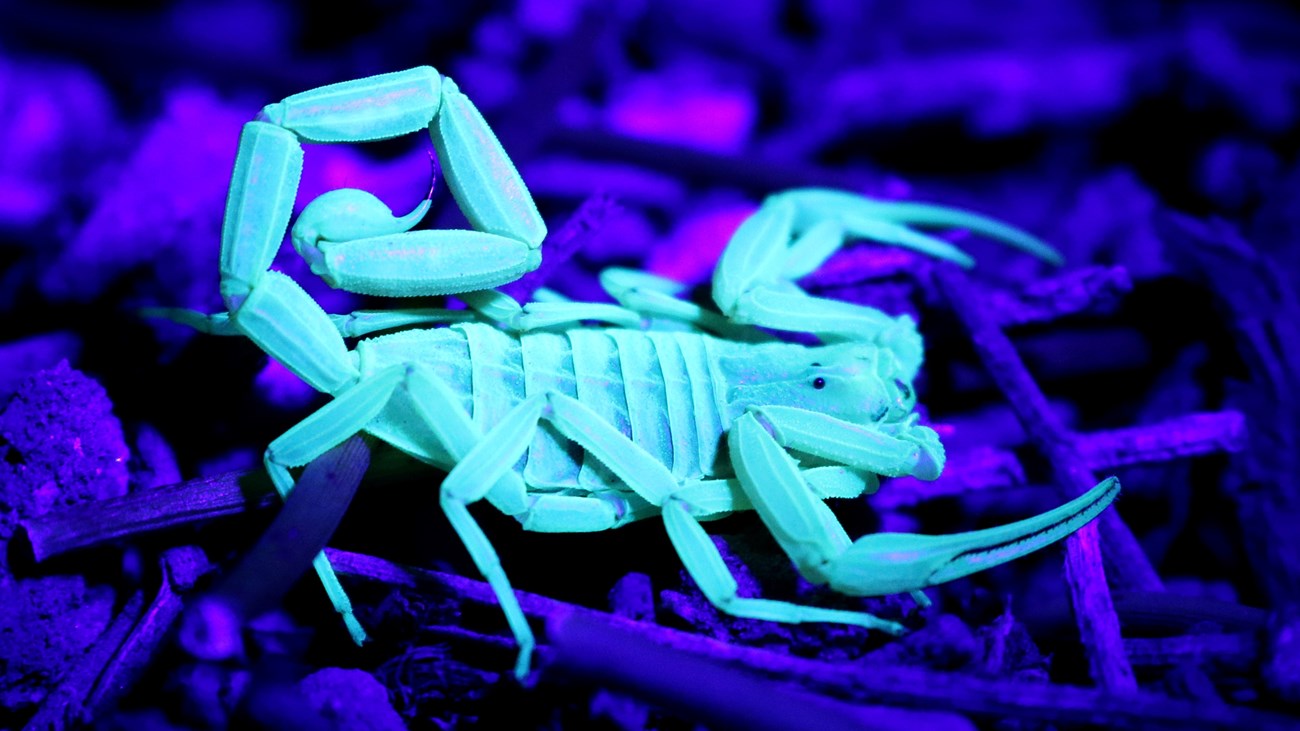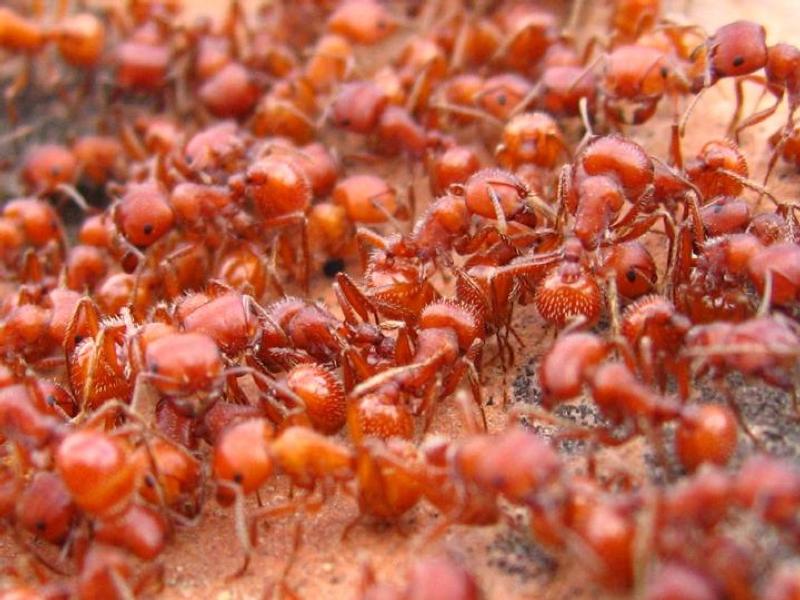Grand Canyon National Park recently announced that the park will be temporarily closing to overnight hotel stays starting on December...


With Halloween at the end of the week, it will be hard to go anywhere without being inundated by pumpkins, spider webs, costumes, and candy. In the spirit of the season, we thought you might like to know a bit about some of the more Halloween-y things you’ll encounter on your Grand Canyon river trip, let’s talk about bugs!
Talking about bugs this time of year might conjure for some of us images of spider-infested barns straight out of Arachnophobia, but the insects and spiders on the river leave humans with little to fear (aside from an occasional sting). Instead, they are beneficial to the ecosystem, and some even contribute to more beautiful, enjoyable trips.
As with any riparian (or outdoor) environment, the Colorado River has a variety of insects and arachnids that call it home. Everything from flies to beetles, butterflies to ants can be found between the canyon walls. The following are some of the more notable species and what you should know about them.
Midges are flies that dwell on or near the water. Mosquito-like in appearance, these insects live out their developmental stages in the water, making excellent food for fish, especially trout. Fly fishers often find success when they model their flies after the different stages of midge development.

Photo: National Parks Service
One species you’ll almost certainly encounter on your trip is the red harvester ant. This is one bug you’ll want to avoid while on the river. Though not life threatening, these little guys have a sharp, painful sting that you’ll want to avoid if possible. When setting up camp, watch out for mounds of loose dirt with holes in their centers. These are harvester ant burrows, and you will not want your cot positioned directly over one when the ants start stirring in the daylight.
Of the many different sounds of summer in the canyon, the cicada’s may be the most distinct. That buzzing you hear in the trees is actually the cicada’s mating call. Males vibrate the membranes on the sides of their bodies creating a buzzing sound and interested females flick their wings with a click in response. There is nothing quite like sitting on a quiet beach, listening to the songs of the cicada.
These insects are also attractive to fish who pluck them from the surface of the water. They, like the midges, can be useful for fly fishers.
For many, scorpions are the stuff of nightmares, but while you wouldn’t want to be the insect who encounters one, they are not lethal to humans. Still, it’s best to avoid these creatures when possible as their sting is still quite painful.
Bark scorpions are small, yellow brown arthropods that hunt at night and hide themselves in cool dark places during the day. Most of the time this means under rocks or inside the hollows of dead trees, but sometimes it can mean shoes or gear you’ve left out overnight. Make sure to shake out clothing and shoes before putting them on, and you’ll likely stay clear of these arachnids’ painful stingers.
Tarantula hawks are wasps named for the arachnids on whom they prey. Though the large, hairy spiders rarely make it down near the river, you may see these large black wasps with orange wings dwelling around your camp. The tarantula’s treatment at the hands of these wasps, certainly sounds like something straight out of a horror movie. When the tarantula hawk locates a tarantula, it will sting and paralyze it. The hawk then buries the still live spider inside its own burrow with a single egg laid on its abdomen. When the egg hatches, the larva will feed on the spider’s body as it matures.
A tarantula hawk’s sting is electric and extremely painful to humans. However, unless you step or sit on one, your chances of being stung are pretty small. These wasps are much more interested in eating and mating than bothering people.
Not everything in the desert stings, and the canyon is filled with butterflies to prove it. In the world of insects, butterflies are often set apart from the ones we think of as creepy or scary. Their maturation process is used as a metaphor for transformation, we admire their colors as they flit about the world, and we benefit from their pollination of the local flora. Many a dull moment in a human’s life has been brightened by an encounter with a butterfly.
Some of the most beautiful and well known species spend their lives in the canyon including monarchs and Arizona’s state butterfly, the two-tailed swallowtail. Watch for them in the canyon fluttering from flower to flower at the river’s edge.
Wondering if you need bug spray check out this blog to find out!
Check out some of our other halloweenish blogs!
If you’re rafting when there are monsoons in Grand Canyon, you might experience something incredible Imagine this: It’s your second day in the canyon and you are overwhelmed by how monumentally tall the walls around you seem to have gotten in such a short time. In the...
Grand Canyon Q&A: A Conversation with 7th Graders This past week, I got a call from our office asking if I’d be willing to talk to some seventh graders about the Grand Canyon. It was definitely an unusual request for me, but of course I said yes. When I...
Stanton’s Cave: An Archaeological Gem in the Grand Canyon The Grand Canyon is full of archaeological and paleontological wonders, but one site that truly stands out for its unique treasures is Stanton’s Cave. Named after Robert Brewster Stanton, the cave was...